Hate Pruning? Plant These 8 Low-Maintenance Hedges for No-Fuss Borders That Look Great Year-Round
A beautiful hedge shouldn't take constant effort. Discover eight reliable shrub varieties that offer year-round appeal with minimal tending.
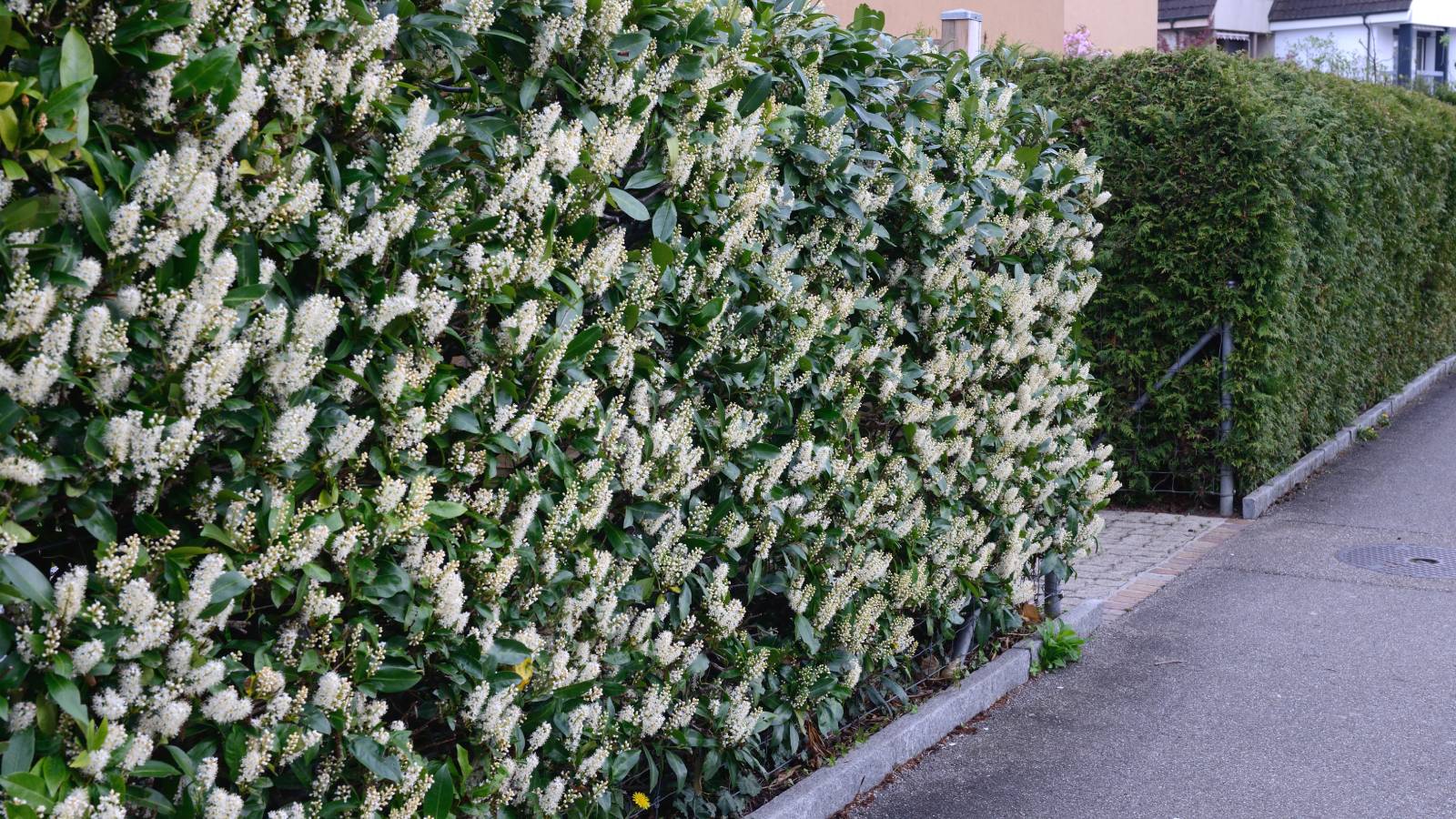

Think of a hedge as a living wall separating one area of your landscape from another or marking your property line. Hedges are “built” of plants, and the level of maintenance your hedge needs will reflect the amount of care required by the individual plants. Plant low maintenance shrubs in a tight line and you’ll be the proud owner of a low-maintenance hedge.
Why a Low-Maintenance Hedge?
Any hedge will dress up your yard, but a low maintenance hedge makes it so easy. Yes, you still have to work the soil, pull out weeds, dig the planting holes, and water after planting. But once the hedge is established, you won’t be called upon to spend hours tending it. An occasional watering, a light pruning now and again, and there you are.
While deciduous hedges can be gorgeous during the growing season, their appeal can fade in winter. Be sure to pick hedge plants that are all-season all stars. They might be conifers lovely all year long, evergreens with spring flowers and fall berries, or deciduous shrubs with winter interest.
Great Low-Maintenance Hedges
Here are eight great hedge plants you might consider. Be sure to take the mature size of the plants into account as well as the hardiness zones.
1. Euonymus
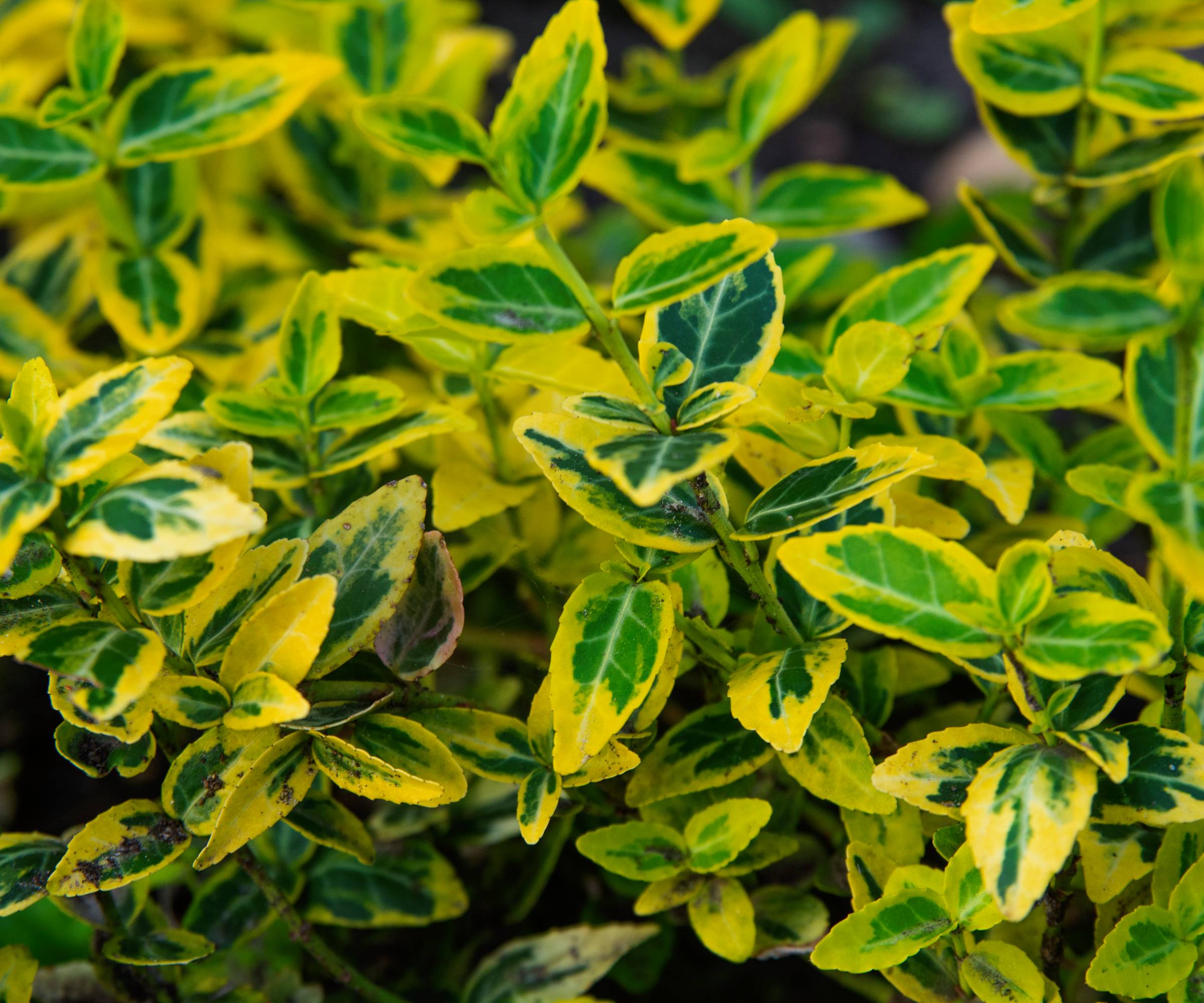
- Euonymus spp.
- Full or partial shade
- USDA zones 6-9
Looking for a low maintenance hedge plant? Euonymus might be the first and last on your list. These shrubs are evergreens with a graceful natural structure and they need little tending. With over 130 species of euonymus, you will be sure to find one you like. They are stunning plants, prized for their unique, variegated foliage. Some cultivars have green leaves trimmed in yellow, while others offer yellow and green or white and green variegation.
2. Chindo Viburnum
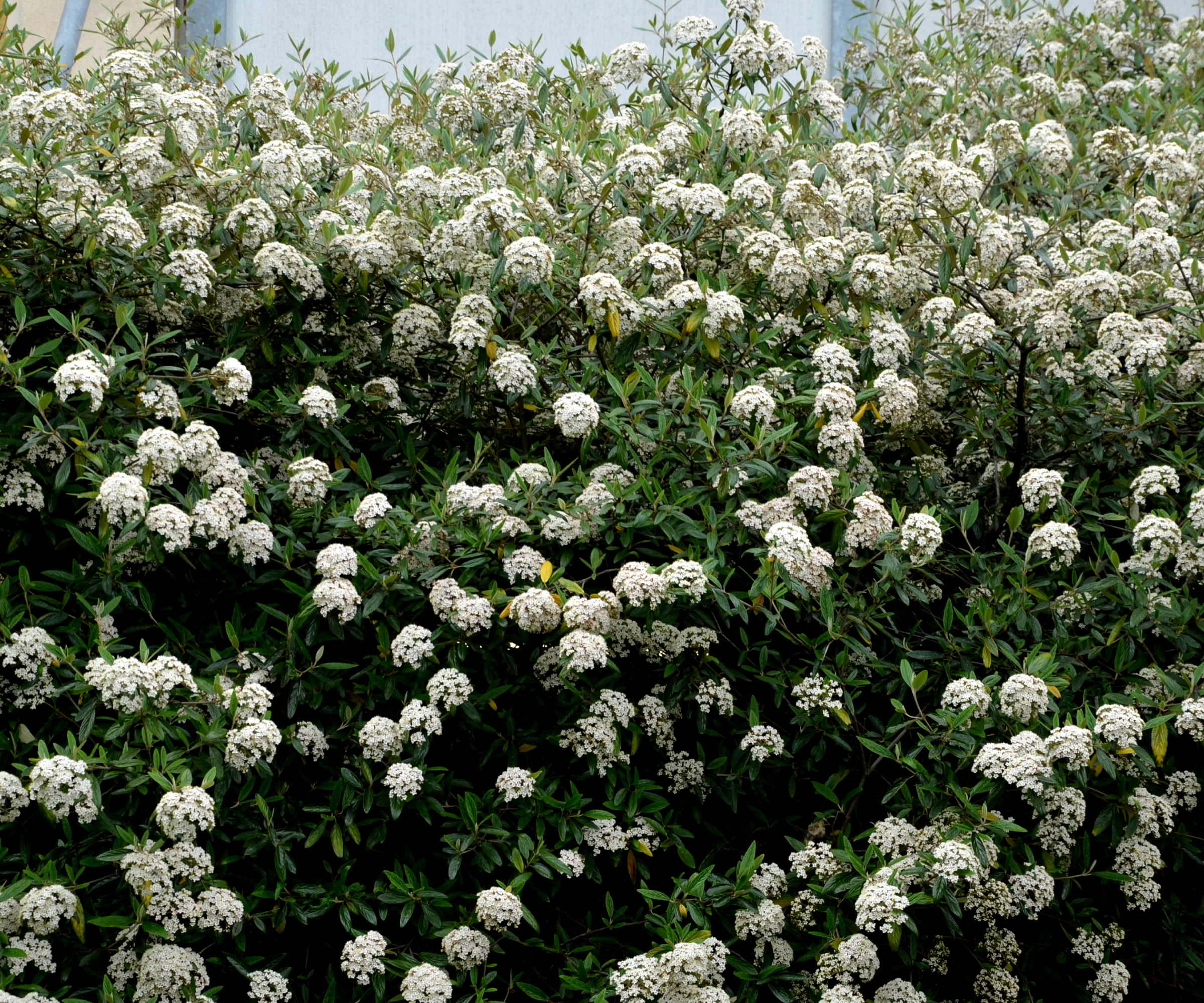
- Viburnum awabuki 'Chindo'
- Full sun is best
- USDA zones 7-11
Most of us putting in a hedge or windbreak wish we would have acted yesterday, or even last year! You can make up for lost time by selecting a fast-growing shrub for your hedge, like bush viburnum. Chindo viburnum is a special type of viburnum that was developed from species found in Sout Korea. They are dense plants, perfect for hedges. It’s easy to fall in love with this species, with their shiny leaves and white flowers. Fall brings bright red berries to add to the beauty.
3. Schiopka Cherry Laurel
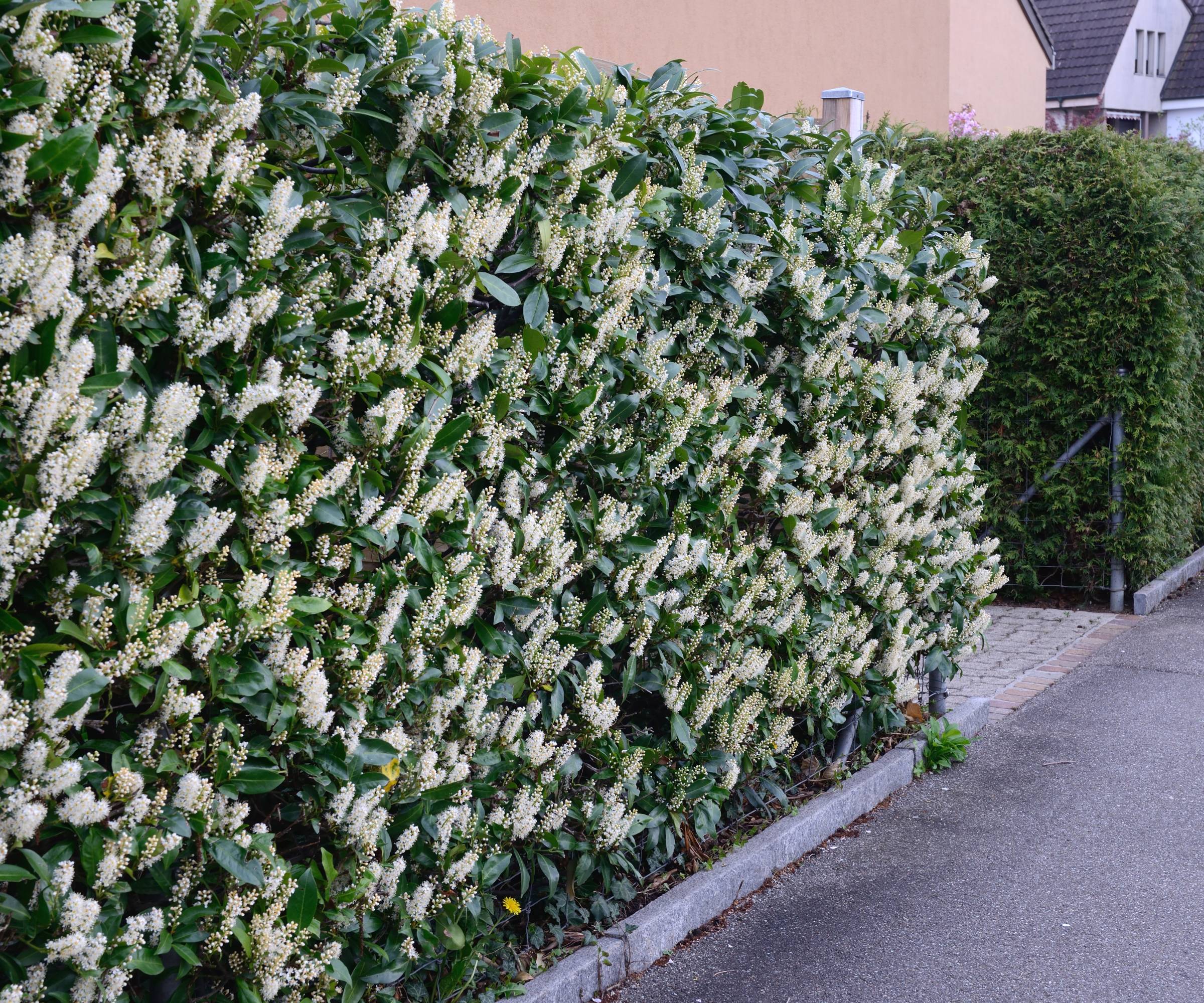
- Prunus laurocerasus 'Schipkaensis'
- Full sun is best
- USDA zones 5-9
If you wander around southeast Europe, you'll see many a cherry laurel tree growing in the wild, lush with thick, glossy foliage. These tall shrubs are flowering evergreens, offering loose clusters of white blossoms in spring and purple-black drupes in fall. For a tall hedge, pick a popular low-maintenance cultivar like ‘Schipkaensis,’ a shrub with thick foliage that reaches 12 feet (3m) tall and half that wide.
Sign up for the Gardening Know How newsletter today and receive a free copy of our e-book "How to Grow Delicious Tomatoes".
4. Yew Plum Pine

- Podocarpus macrophyllus
- Full sun or partial shade
- USDA zones 7-9
If you aren’t familiar with yew plum pines, you’re in for a treat. These slow-growing evergreens are conifers with dark, dense, needle-like leaves. Yew plum pine prunes easily. This is important if you want a shorter hedge, since these shrubs can grow above 30 feet (10m) if left to their own devices. Podocarpus shrubs aren’t needy when it comes to water, which makes them ideal for drought-prone areas.
5. Japanese Holly
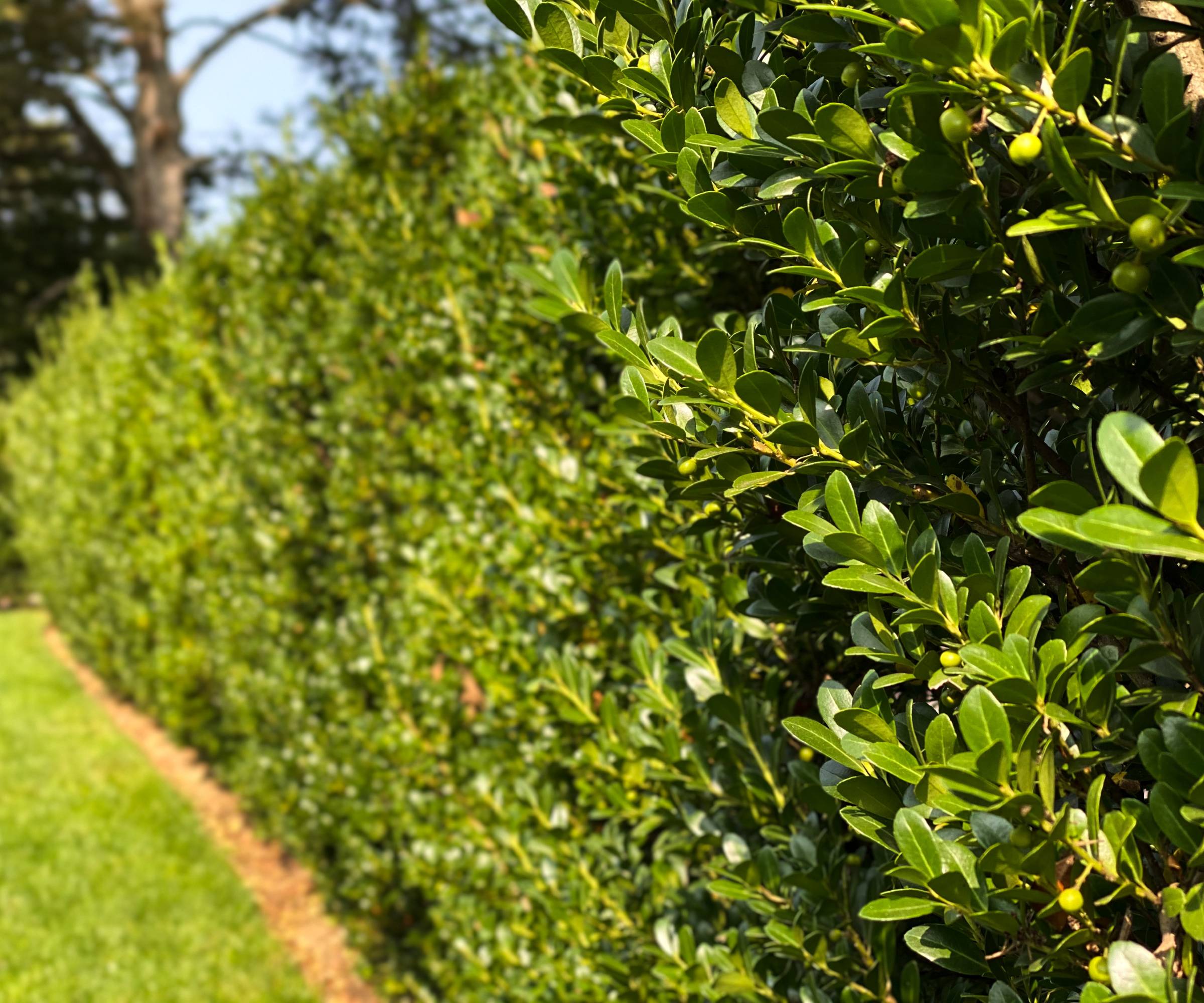
- Ilex crenata
- Full sun to part shade
- USDA zones 5-8
Do you like the look of boxwood but prefer something a little more ornamental? Japanese holly might be the right low-maintenance shrub for your hedge. In addition to its small, oval, boxwood-like leaves, Japanese holly offers white spring flowers and bright fall berries too. A hedge of Japanese holly is among the easiest to maintain, since the shrub tolerates drought, pruning, poor soil and urban conditions.
6. Arborvitae
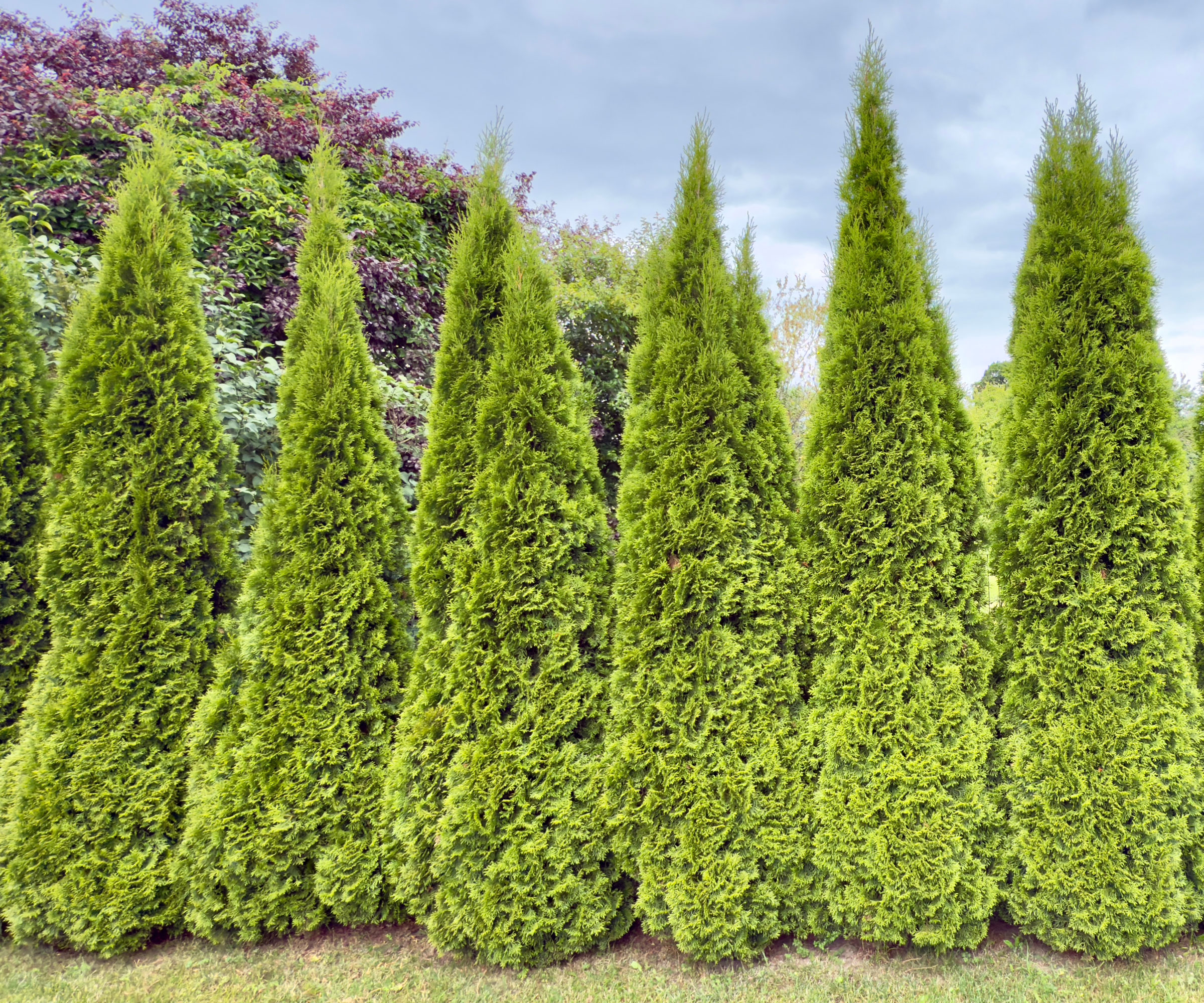
- Thuya spp.
- Full sun or part shade
- USDA zones 2-7
Arborvitae are frequently seen in hedging, and there are many good reasons for their popularity. Gardeners love their extremely fast growth rate as well as their foliage; this combination results in a viable hedge in just a few years. And arborvitae are super low-maintenance, with their flat, needle-like leaves and mahogany bark. You can find arborvitae species in all sizes, shapes and colors.
7. Firethorn
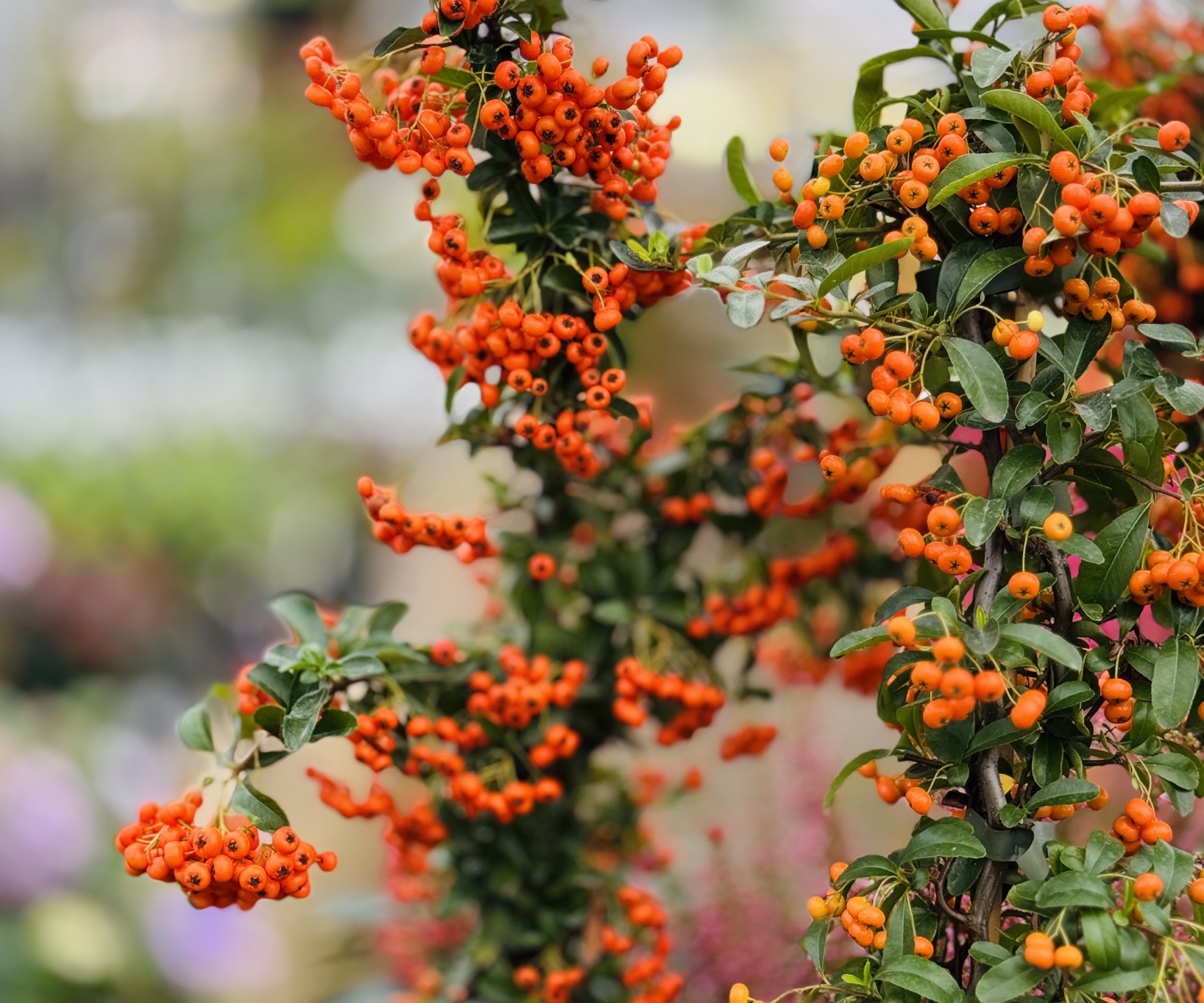
- Pyracantha coccinea
- Full sun or part shade
- USDA zones 6-9
Pyracantha is one of my personal favorites when it comes to hedge plants. Yes, it has wicked, wicked thorns, but that’s one of its charms for me. My hedge now stands taller than I am and keeps out all invaders, from wild ponies and wild boar to trespassers.
Firethorn plants shoot up some 2 feet (.6m) every year and provide the birds with very safe nesting areas. Even the snakes in the neighborhood stay away from pyracantha. The foliage is a deep wine color, contrasting beautifully with the white spring blooms. Bright autumn berries hang on the plants through winter and supply native birds with food when there is little else available.
8. Yellow-Twig Dogwood

- Cornus sericea 'Flaviramea'
- Full sun or partial shade
- USDA zones 3-8
Dogwood species are native to America and thrive without much human intervention in some of the coldest areas of the country. Yellow-twig dogwoods are deciduous trees that lose their leaves in autumn, but that doesn’t mean a dogwood hedge isn’t attractive in winter. Yellow-twig dogwood has – you guessed it – yellow shoots and branches that light up the chilly December days. Spring brings new emerald leaves and clusters of white blossoms. This lovely variety of dogwood grows to 8 feet (2.5m) tall and wide.
Hedge Care Essentials
- The secret to easy maintenance is planting it right from the start. Make sure you have the soil your shrubs need with the MySoil Test Kit, available on Amazon.
- These shrubs shouldn't need extra water, but if you're in a very dry climate, consider a drip irrigation system like this one from Home Depot.
- Get exactly the nutrients your shrubs need with these Old Farmer's Almanac Tree & Shrub Fertilizer Spikes, available on Amazon.
- Need to shape your hedge to the perfect shape? Try these THANOS loppers from Amazon.
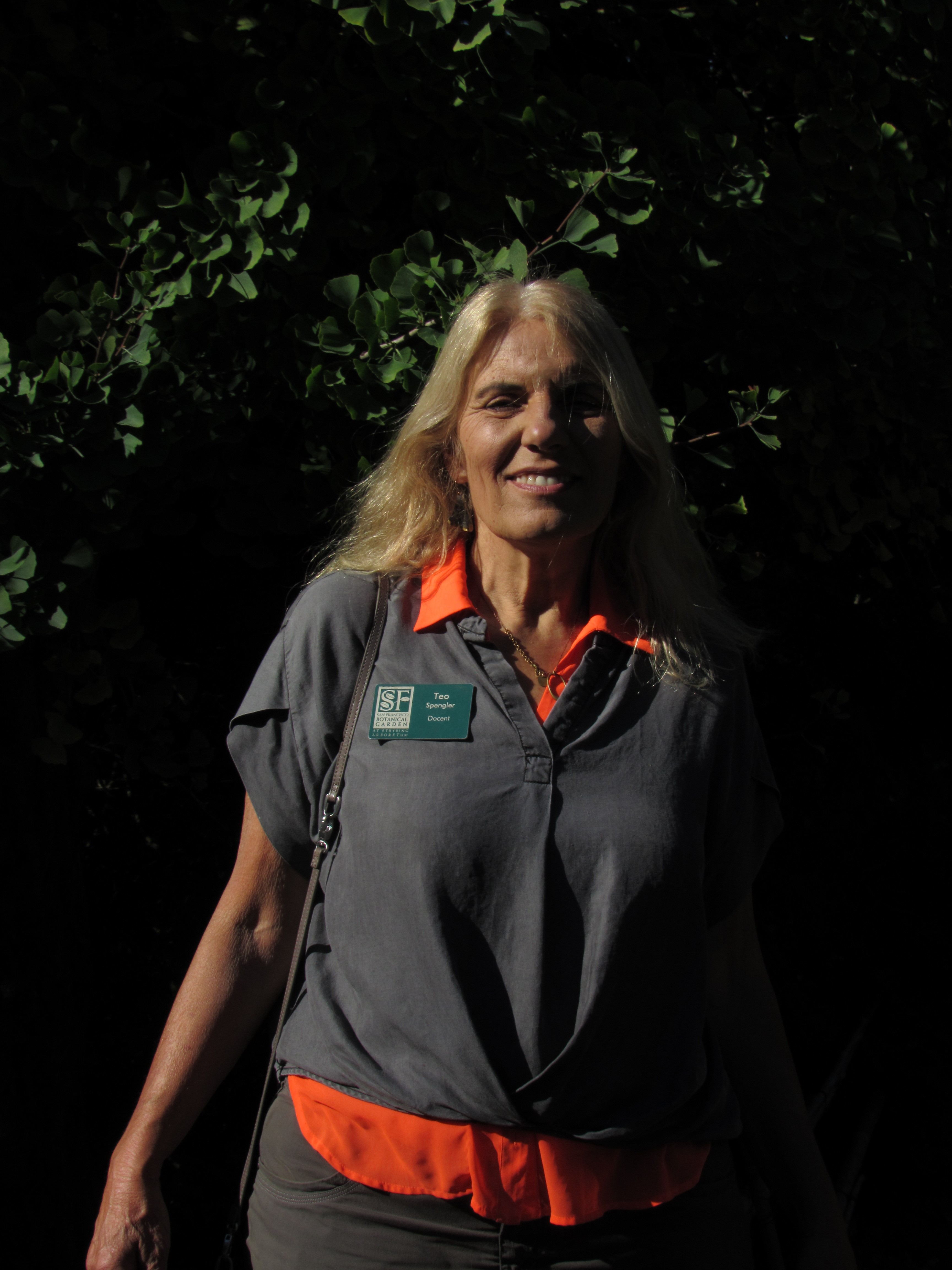
Teo Spengler is a master gardener and a docent at the San Francisco Botanical Garden, where she hosts public tours. She has studied horticulture and written about nature, trees, plants, and gardening for more than two decades, following a career as an attorney and legal writer. Her extended family includes some 30 houseplants and hundreds of outdoor plants, including 250 trees, which are her main passion. Spengler currently splits her life between San Francisco and the French Basque Country, though she was raised in Alaska, giving her experience of gardening in a range of climates.